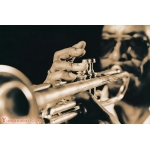原文:
Think of this… If, when you were learning to write, the teacher insisted that you hold the pencil in a way that was difficult or impossible for you, would you have learned to write very well? No, of course not! Or, if the teacher told you to concentrate on what you wanted to write, not the process of writing, would you then be able to maneuver the pencil, without knowing how to form the letters? Again, of course not. Or even, if the teacher told you to concentrate on the muscles of your arm, could you then write?
No, you needed first to learn to hold the pencil (which required you and/or your teacher being able to recognize which hand was dominant), then to apply the pencil to paper, at first using a large, thick pencil and writing in huge letters, then as you gained mastery, learning to use smaller size pencil and print… Finally you learned to write in cursive, with a fine-line pen or even a fountain pen, or perhaps even mastering the fine art of calligraphy!
In playing any instrument much the same process must be followed. Sometimes we must regress to the point of holding the pencil (locating the mouthpiece on the lips, or even correcting the size of the mpc) Sometimes, we need only go over the formation of certain letters, or change the angle (left to right) or tilt (pivot: up or down) of the paper (instrument)。But it is always far easier to teach the right way from the beginning than it is to undertake remedial work.
That is why I advocate using the very low pedals, even from the first lesson for beginners. That is also why I feel buzzing(including lips and mouthpiece)to be important. There are those who can play without buzzing first, but their row becomes much harder to plow without removing those big rocks (non-buzzing styles of playing) first.
The slow, low pedals enable good buzzing. I don’t advocate the first octave of pedals. Why? Because they inevitably lead to bad habits in beginners, such as closed teeth and open apertures (both are bad things)。Too often, again, there are players who are very strong, who advocate what works best for them, not for the student who is seeking guidance. That's why I strive to understand the student, and offer general principles first, before the specifics and the details of development.
译文:
想一想这个问题。先举个例子,假如你正在学写字,如果这时候你的老师坚持说你握笔的姿势对于你来说是不合适的,那么你能写得漂亮么?当然不会。或者,如果你的老师告诉你要全身心投入到你要写的字上,而不告诉你写字的步骤方法,你会在这种不知道字母格式的情况下动笔么?答案还是否定的。或者甚至是,如果你的老师告诉你把注意力放在你拿笔的那只胳膊的肌肉上,你能写得好字么?
不能。学写字首先需要学会的是握笔方法(这需要你或你的老师知道你是不是左撇子),接下来提供给你纸和铅笔,一开始要用粗头铅笔写大号儿的字母,之后随着你的掌握程度,学着用细头铅笔写字,最终你学会了用签字笔或钢笔写连笔字,或者也许你还成为了书法家。
在学习演奏乐器方面其实有着和学习写字同样可遵循的过程。有些时候我们必须回归到握笔这一点上(号嘴在嘴唇上的位置,甚至是选择适用于你嘴唇的号嘴型号);有些时候,我们需要复习正确的字母拼写形式,或者改变书写角度(从左写到右)或者挪动纸张位置(就像将喇叭口适当抬高或降低一样)。要知道在初学者时期学习这些正确方法要比回过头来学习容易得多。
这就是我为什么一直提倡从最低的起点开始,甚至对于上第一节课的入门学生来说。这也是我觉得为什么振动(包括唇振和吹号嘴两部分)是那么重要的原因。仍然有好多学生在之前没有进行振动训练的情况下演奏,但是他们会发现越往后学习演奏,在没有移走这块大石头的情况下将会变得多么困难。
从慢的低的起点开始,能给你好的振动(打下良好基础)。我不提倡把练习音阶当作一个基础性起点。为什么?因为它不可避免的导致初学者养成不好的习惯,像上下牙摒紧,嘴唇孔隙过大等等。还有,很常见的就是一些很强的演奏者,他们总提倡一些对于他们而言掌握最好的东西,我们会发现这些提倡往往不是针对那些渴望寻求指点的学生们的。这也就是为什么我要努力懂得理解学生,先提供给他们原则性涵盖性广的内容,再渐渐往细节上发展(注:就像九年义务教育和高等教育一样,由初级基础过渡到高级专业,可以类比想象)。

